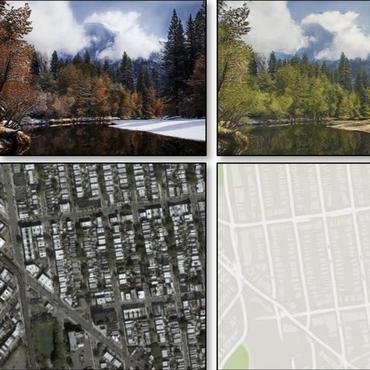Search Results for author: Mikołaj Bińkowski
Found 8 papers, 5 papers with code
A review of two decades of correlations, hierarchies, networks and clustering in financial markets
no code implementations • 1 Mar 2017 • Gautier Marti, Frank Nielsen, Mikołaj Bińkowski, Philippe Donnat
We review the state of the art of clustering financial time series and the study of their correlations alongside other interaction networks.
Autoregressive Convolutional Neural Networks for Asynchronous Time Series
2 code implementations • ICML 2018 • Mikołaj Bińkowski, Gautier Marti, Philippe Donnat
We propose Significance-Offset Convolutional Neural Network, a deep convolutional network architecture for regression of multivariate asynchronous time series.
Demystifying MMD GANs
7 code implementations • ICLR 2018 • Mikołaj Bińkowski, Danica J. Sutherland, Michael Arbel, Arthur Gretton
We investigate the training and performance of generative adversarial networks using the Maximum Mean Discrepancy (MMD) as critic, termed MMD GANs.
On gradient regularizers for MMD GANs
1 code implementation • NeurIPS 2018 • Michael Arbel, Danica J. Sutherland, Mikołaj Bińkowski, Arthur Gretton
We propose a principled method for gradient-based regularization of the critic of GAN-like models trained by adversarially optimizing the kernel of a Maximum Mean Discrepancy (MMD).
 Ranked #128 on
Image Generation
on CIFAR-10
Ranked #128 on
Image Generation
on CIFAR-10
Unsupervised one-to-many image translation
no code implementations • ICLR 2019 • Samuel Lavoie-Marchildon, Sebastien Lachapelle, Mikołaj Bińkowski, Aaron Courville, Yoshua Bengio, R. Devon Hjelm
We perform completely unsupervised one-sided image to image translation between a source domain $X$ and a target domain $Y$ such that we preserve relevant underlying shared semantics (e. g., class, size, shape, etc).
Batch weight for domain adaptation with mass shift
no code implementations • 29 May 2019 • Mikołaj Bińkowski, R. Devon Hjelm, Aaron Courville
We also provide rigorous probabilistic setting for domain transfer and new simplified objective for training transfer networks, an alternative to complex, multi-component loss functions used in the current state-of-the art image-to-image translation models.
High Fidelity Speech Synthesis with Adversarial Networks
3 code implementations • ICLR 2020 • Mikołaj Bińkowski, Jeff Donahue, Sander Dieleman, Aidan Clark, Erich Elsen, Norman Casagrande, Luis C. Cobo, Karen Simonyan
However, their application in the audio domain has received limited attention, and autoregressive models, such as WaveNet, remain the state of the art in generative modelling of audio signals such as human speech.
End-to-End Adversarial Text-to-Speech
2 code implementations • ICLR 2021 • Jeff Donahue, Sander Dieleman, Mikołaj Bińkowski, Erich Elsen, Karen Simonyan
Modern text-to-speech synthesis pipelines typically involve multiple processing stages, each of which is designed or learnt independently from the rest.







